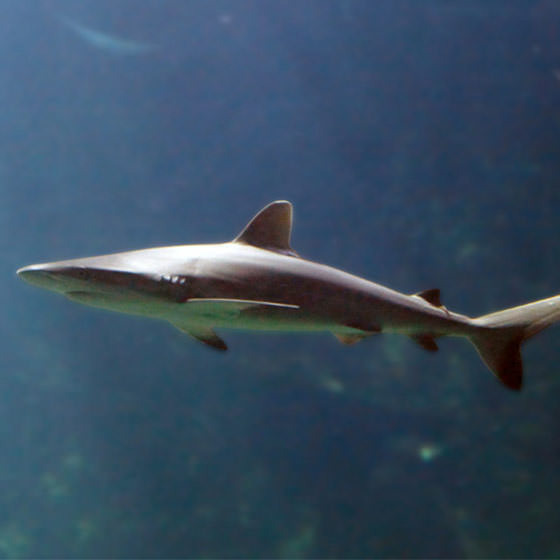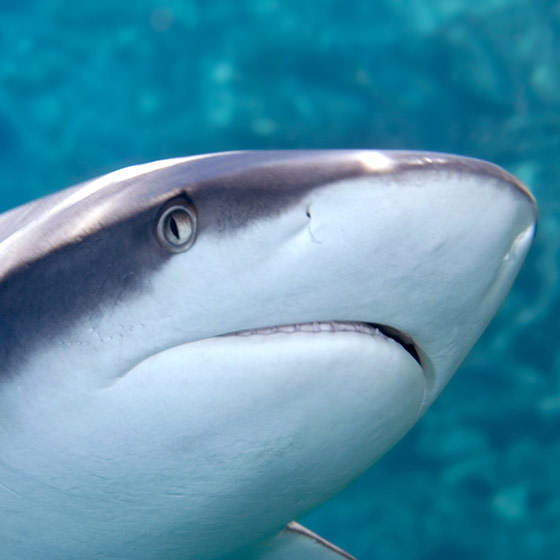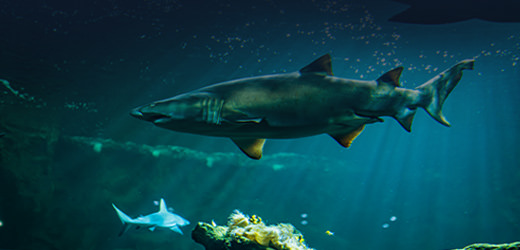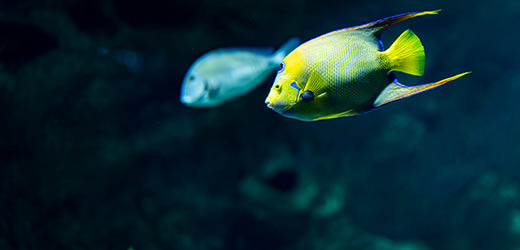Biology
The grey reef shark stands apart from the grey sandbar shark (Carcharhinus plumbeus) for its black-tipped pectoral, ventral and caudal fins.
Its silhouette is massive and powerful. It tends to frequent the outer slopes, passes and areas surrounding coral reefs, and sometimes lagoons.
Its schools can number several hundred individual sharks by day, although grey reef sharks tend to scatter at night to hunt.





